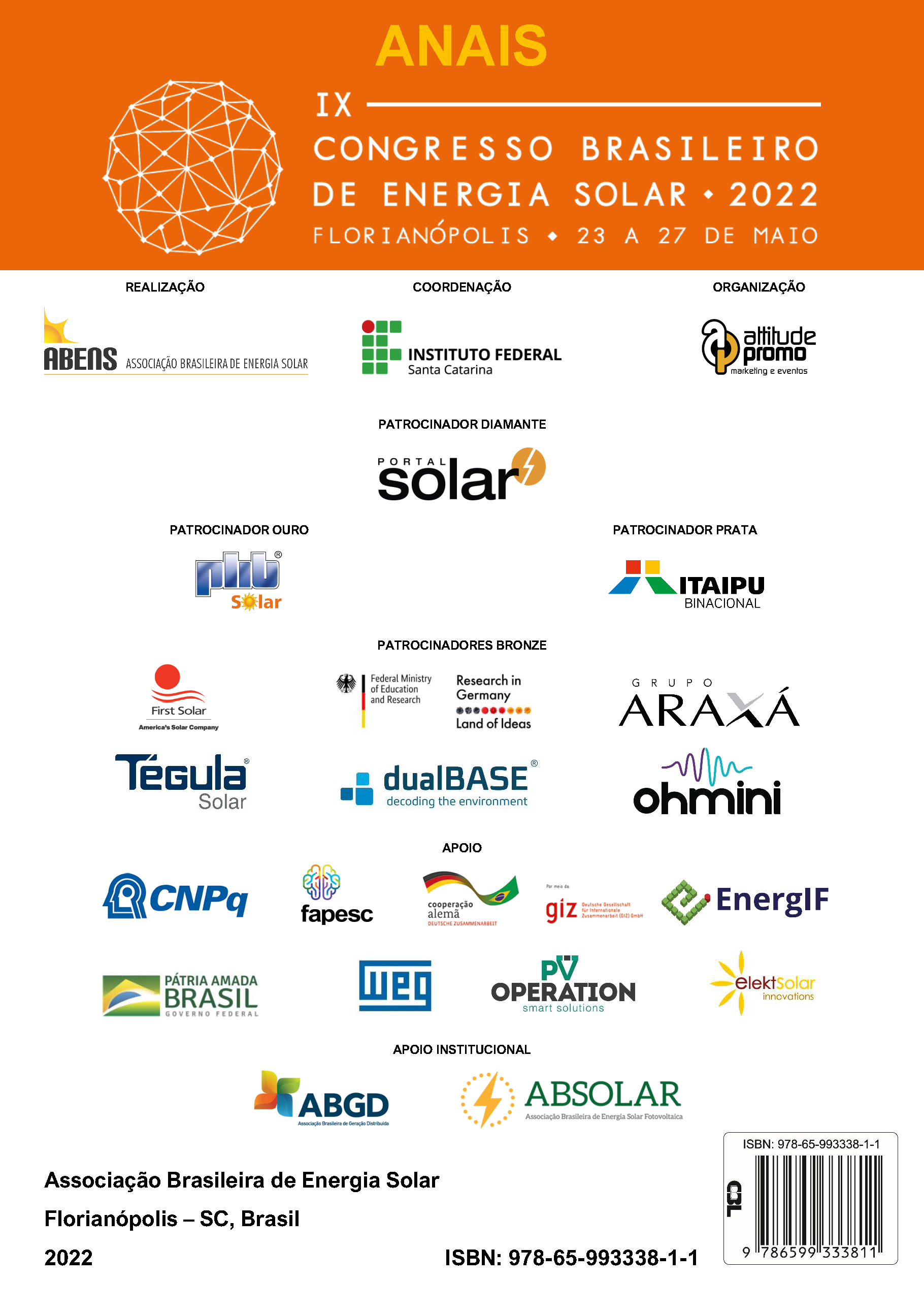ISOLATED HYBRID MICROGRID FOR ACCESS TO ELECTRICITY
CASE STUDY IN NORTHEAST ARGENTINE
DOI:
https://doi.org/10.59627/cbens.2022.1237Keywords:
Photovoltaic Solar Energy, Hybrid Micro Grid, SimulationAbstract
Microgrids have now become an option for universal access to electricity in rural areas of developing countries. This article analyzes a microgrid designed and installed in 2019 to provide energy access to the inhabitants of Paraje Malvinas, located in the South-East of the Province of Corrientes, Argentina (Latitude 29°38'09.34 S, Longitude 58°59' 15.86 W). The microgrid responds to the configuration of a Solar/Battery/Diesel Hybrid System. The analysis is carried out through values obtained by a simulation and values measured using the existing microgrid configuration considering the energy consumption provided by the Secretary of Energy, with an initial value of 66 kWh/day. The simulated results initially showed that the microgrid supplies electricity with a levelized cost of US$0.329/kWh, with CO2 emissions of 18,500 kg/year and a renewable fraction of 93.8%. Comparing values measured with the initially considering demand, it is verified that it is well above the consumption in the Paraje, which leads to a new simulation considering the real load profiles. Through this new adjusted simulation, it is verified that the Diesel generator does not come into operation at any time to supply the demand, the calculated percentage of solar fraction is not used and results in a System with lower performance than expected. From the results of the comparison, it stands out that the LCOE value is 57% higher than the initially expected value. Therefore, a hybrid microgrid solution from a renewable energy source can be a viable option to electrify areas far from the grid, but the demand must be properly determined since it is essential for the adequate dimensioning of the microgrid.
Downloads
References
Celik, A. N. (2002). The system performance of autonomous photovoltaic–wind hybrid energy systems using synthetically generated weather data. Renewable energy, 27(1), 107-121.
Chatterjee, A., & Rayudu, R. (2017). Techno-economic analysis of hybrid renewable energy system for rural electrification in India. In 2017 IEEE Innovative Smart Grid Technologies - Asia (ISGT-Asia) (pp. 1–5). IEEE.
Hermana R, Sánchez J, 2020. Casos de microrredes. Instituto Vasco de Competitividad-Fundación Deusto. ISSN 2340-7638
HOMERPro x64. (National Renewable Energy Laboratory, USA) ,http://www.nrel.gov/homer
Lal, D. K., Dash, B. B., & Akella, A. K. (2011). Optimization of PV/wind/micro-hydro/diesel hybrid power system in HOMER for the study area. International Journal on Electrical Engineering and Informatics, 3(3), 307.
Lambert, T., Gilman, P. and Lilienthal, P., 2006, Micropower system modelling with HOMER, integration of alternative sources of energy. John Wiley & Sons Inc. chapter 15: 379–415.
Longe, O.M., Oluwajobi, F.I. and Omowole, F., 2013, Electricity access in Sub-Saharan Africa – Case for renewable energy sources microgrid. Proc. IEEE NIGERCON, 253-257.
Muñoz Maldonado, Y. A. (2012). Optimización de recursos energéticos en zonas aisladas mediante estrategias de suministro y consumo (Doctoral dissertation, Universitat Politècnica de València).
Paredes L, Serrano B y Molina M, 2019 Microrredes – Una Revisión Metodológica em el Contexto Actual De Los Sistemas Eléctricos. Colegio de Ingenieros Eléctricos y Electrónicos de Ecuador. Revista: CIEEPI. ISSN: 2477-8958
PERMER, 2021 Proyecto de Energías Renovables en Mercados Rurales. https://www.argentina.gob.ar/economia/energia/permer
Rojas-Zerpa, J. C., & Yusta, J. M. (2014). Methodologies, technologies and applications for electric supply planning in rural remote areas. Energy for sustainable development, 20, 66-76.
World Energy Outlook, 2020, http://www.worldenergyoutlo ok.org/publications/weo-2020/.


